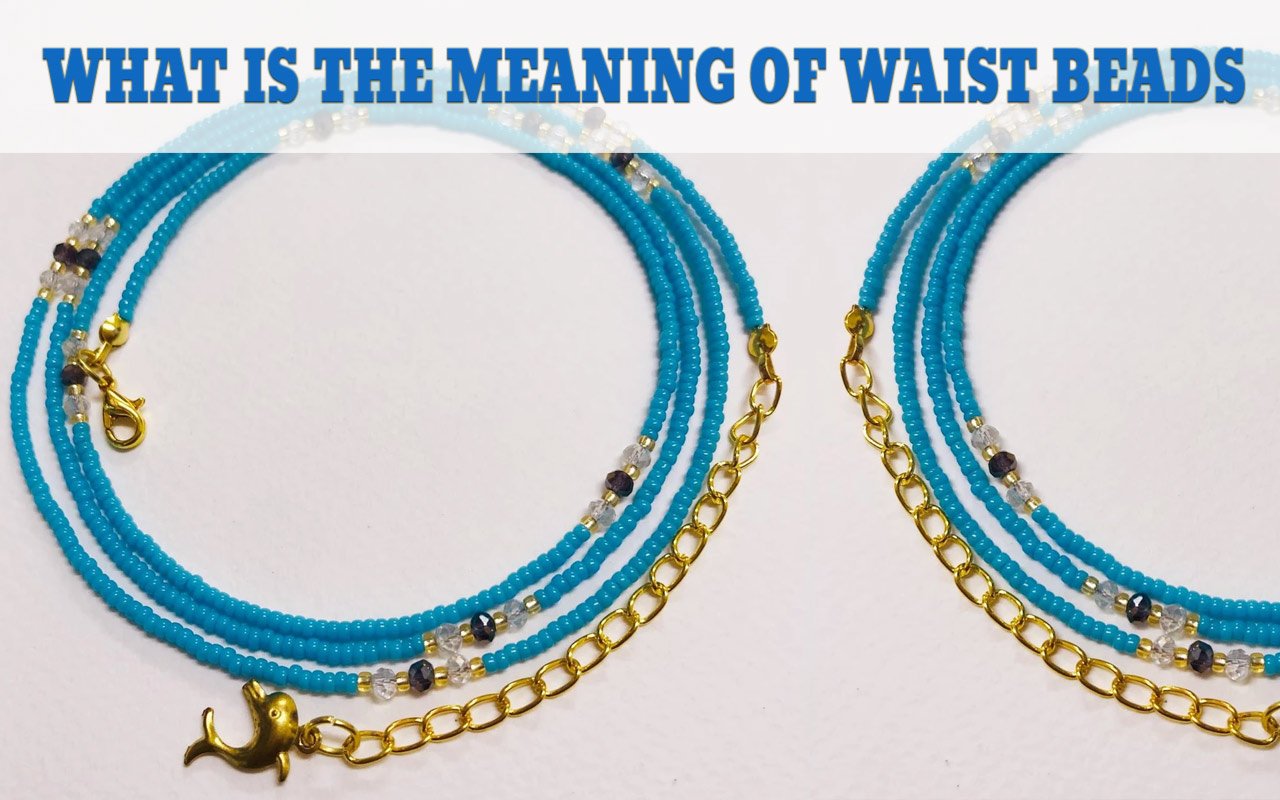Although they may appear to be a simple accessory for the waist, waist beads can have a profound effect on the wearer. It can feel grounding and sensual to wrap a pair of beads around your waist. The beads act as a constant reminder to be more attentive and loving towards your body.
Waist beads are very personal items. You can find as many meanings in them as you can styles. This West African tradition will only continue to grow as more waist beads become popular.
Table of Contents
The formation of the waist beads
Traditionally, the person who makes your waist bead is considered a spiritual being. Beads, shells, or stones placed on your waist are selected with the intent of something or something very particular.
The beads a woman will wear for her husband may be different than the beads she wears for herself as she transitions into womanhood. Modern trends in waist beads have been embraced, but historically, the power and potency of women’s beading as it relates to spirituality and development was highly specific and planned.
Waist beads can help a person become more aware of their stomach and posture. In addition, waist beads hold deep cultural significance peculiar to the different African societies.
Waist beads can also be used to promote fertility and seduce women. These beads are worn primarily by women. Waist beads are used to symbolize wealth and can also be used as menstrual fabric. They are used in many cultures as a symbol to show a woman her femininity. They can also be used in protecting or promoting fertility.
African waist beads are normally worn by women but sometimes men, and it is viewed as a symbol of sensuality, femininity, fertility, and spiritual well-being.
Waist Beads Color Meaning
The meaning of the color of waist beads is determined by many factors such as design, length, and flexibility. These characteristics are used to determine which style is best for each occasion. These are the most popular colors for waist beads. They are sometimes called Yomba, GiriGiri, and Jel-Jelli by tribal members. Several tribal members believe their meanings are very important.
Women wear waist beads to attract men and women to attract them. These beads can also be used to indicate different moods or traits. Blue can be used to indicate a happy mood. Yellow is more serious. When it comes to finding a partner, the colors orange and yellow are helpful. Blue is associated with calmness while brown symbolizes friendliness, approachability, and friendliness.
Because of their cultural significance, it is important to know the color meaning of waist beads. Women wore waist beads to express their femininity and attract men in the past. They have been worn by some tribes for hundreds of years. They have been worn by some cultures as a symbol of their love for their man. They were worn to show love and devotion for their man. Blue is a symbol of prosperity and red, is love.
The waist is associated with many aspects of womanhood in African cultures. The symbol of womanhood and pregnancy is the waist. For Black women, it can be a right of passage. Many diaspora women are not aware of their West African roots. This is why the color of the waist beads is so important to their heritage. You will feel great about yourself if you choose the right color for yours.
There are many color meanings for waist beads. The wearer’s mood will affect the color of the beads. They can be used to symbolize fertility and weight loss in some cultures. These strands have been worn by women to express their femininity. These beads can be worn to show your femininity or to express your style. You should choose a color that inspires confidence and strength. You can also choose the colors that appeal to you most.
Waist beads are often worn under clothing in African cultures and are used to promote fertility and womanhood. They are associated in Nigeria with the colors green and white, which are symbols of power and loyalty. Pink and purple are symbolic of beauty. Because they are delicate and easily lose, it is crucial to choose the right size for your waistband. These can be worn with almost any outfit, even shorts or low-waisted jeans.
In summary, we can recognize the color meaning of the waist beads as follows:
- Blue: healing, harmony, insight, truth
- Brown: earth, stability
- Green: prosperity, fertility, abundance, hope, healing
- Purple: spirituality, wisdom, royalty
- Red: vitality, passion, bravery, confidence
- White: light, truth, purity
- Yellow: wisdom, clarity, awareness, energy, joy
In addition, these waist beads are often decorated with stones and charms, their meanings are usually:
- Evil eye: protection against negativity
- Green aventurine: luck, prosperity, wealth
- Hamsa: protection against evil or bad luck
- Lapis lazuli: peace, wisdom, truth, insight
- Quartz: clarity, amplifies other crystals
- Rose quartz: love, compassion, healing
Why do people wear waist beads?

You can wear waist beads for many reasons. Here are some reasons why you might choose to wear waist beads.
Aesthetics: It is no surprise that women in America love to wear waist beads. They’re beautiful and an unusual way to decorate the body. Even though there isn’t a specific meaning to wearing them, many women do so for aesthetic reasons. Waist beads can add a stylish touch to any outfit and help show a flattering waistline.
Weight Management: Many people believe that the use of waist beads will shape their waists. Waist beads can help you gauge if your waist is growing or shrinking. If you are losing weight, the beads will become tighter and move higher. However, they will loosen and fall if you are slimming down. Many women wear waist beads to keep track of how much they weigh.
Sensuality, Intimacy, and Sensuality: Many women use waist beads to seduce the men they love. In some cultures, women wear waist beads beneath their clothes that can only be seen by their partners. In these cases, waist beads might resemble lingerie.
Heritage: Wrist beads are available in many colors, and they come from Africa. Many African women will use waist beads to connect with their heritage and cultures. It’s an excellent way to feel proud of one’s culture as well as to connect.
Posture: Some women use waist beads to correct their posture. When you slouch your waist beads will become tighter and roll-up. This is an excellent way to feel if you are not sitting properly. Better posture is good for your health. You can use waist beads to help you look better.
There are two options: You can wear them around your waist, or on the hips. If you’re having difficulty choosing the right color, it is possible to choose according to your current feelings. A Chakra chart can help you determine the color that corresponds to which chakra if you’re unsure.
In different cultures, waist beads can have many meanings. These beads can be worn around the hips. Some women use them to attract suitors. These beads can help you stand straighter and strengthen your stomach muscles. They do not have any magical properties but can help you become more aware of the shape and position of your stomach. You can either purchase one from a trusted supplier, or you can make it yourself. This will ensure you receive a meaningful, unique gift.
The variety of Waist bead styles is impressive, and each woman should make her own decision. Although they are often worn as fashion statements in some cultures, others wear them to make an impact. They can be worn to attract suitors or promote fertility. These bracelets are worn by many women to enhance the appearance of their bodies, but some women also have them as protection against harmful energies. The meanings of these bracelets vary, but they are all very important in their culture. It is worth thinking about.
These beads are associated with fertility and are worn by many women, they can be found around the waist. They are often worn as an accessory for sensuality. They are often worn by women in intimate situations such as sex. Some prefer to wear waist beads to draw attention toward sex. Some women view these beads as a sign they are having sex. These bracelets are a way to bring joy and peace to other people.
The meaning of a “waist bead” varies from one culture to the next. In Africa, the use of waist beads is contraception and fertility. These necklaces have different meanings depending on who they are worn by. A bead that her husband gives her around her waist can help a woman avoid obsessive thoughts. A husband’s waist bead is considered to be a symbol of her love. It is often given to daughters by their parents as a token of their affection.
